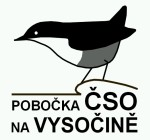Taking care of the nature
The natural richness of the Vysočina Region is a typical example of hundreds – and in some cases thousands – of years of coexistence of natural environment and traditional farming activities of human communities. In modern society, where the traditional use of the nature was pushed backwards, the need arises to provide regular care of the important localities, because without proper care, there is a dramatic decay of natural richness in many cases. We lose unique localities with exceptional biotopes, and some species are not far from dying out. In fact, it has already happened in many cases and some natural phenomena are completely lost in the Vysočina Region (extinction of localities and some species).
For conservation of valuable localities, specially protected areas have been claimed, each of which has prepared its own plan of care that is observed by the administrators of the area. In our region, the administration is held by the Vysočina Region Authority, PLA Administration Žďárské vrchy and PLA Administration Železné hory. These institutions take care of specially protected species as well. Some aspects of nature conservation are in charge of the municipalities with extended field of action (e.g. care of the important natural components and commemorative trees) and municipal offices (e.g. care of timber species).
Next to the public institutions, a number of non-profit making organisations and individuals participate in the care of nature. These activities are also attended by the Vysočina Region Branch of the CSO and its members. Apart to the regular care of chosen localities, we attempt for revitalisation of localities damaged in past by infelicitous interventions.
We also participated or currently participate at revitalisations or major interventions of protection at the following localities:
- Černíč
- Dobrá Voda
- Hajnice
- Chvojnov
- Ještěnice
- Jezdovické rašeliniště
- Na Oklice
- Na Ostražné
- Nad Svitákem
- Obecník
- Pístovské mokřady
- Pod Trojanem
- Rašeliniště Bažantka
- Rašeliniště Kaliště
- Rašeliniště Loučky
- Rybník Pařez
- Šimanovské rašeliniště
- U Farského lesa (V Hati)
- U Hájenky
- U Popického rybníka
- U Šeredů
- Údolí Brtnice
- V Lisovech
- Vílanecké rašeliniště
With the aim of the care of chosen localities, the so called land trusts may be founded. One such trust is run by the Vysočina Region Branch of the CSO and its name is Land Trust Gallinago.
Land Trust Gallinago
Land Trust Gallinago by the Vysočina Region Branch of the CSO is concerned with practical care of important sites of rare, endangered or regionally important species of various organisms. With this aim, we collect special-interest premises to our ownership, lease or loan. We specialised on the care of the breeding place of common snipe (Gallinago gallinago) that nests in moorlands and underflooded meadows. These meadows form a biotope for a series of other protected and endangered species. In order to preserve a meadow, it is necessary to be cut regularly, otherwise various timber species may grow there or some other stronger species may prevail. The original species get lost and rare species may become extinct.
Currently, we participate at the regular care at the following localities:
- Černíč
- Hajnice
- Chvojnov
- Javořický potok
- Ještěnice
- Na Oklice
- Na Průhoně
- Nad Návozy
- Nad Svitákem
- Pístovské mokřady
- Pod Čertovým kamenem
- Pod Trojanem
- Rašeliniště Bažantka
- Rašeliniště Loučky
- Starohorský mokřad
- U Farského lesa (V Hati)
- U Popického rybníka
- U Šeredů
- Údolí Chlébského potoka
Care of the chosen species
The Vysočina Region Branch of the CSO is also concerned with protection and care of chosen species. We create new nest opportunities and organise protection of nests from their damage or abolishment.
Specifically, we dealt with the following species:
- Common Snipe
- Great Bittern
- Little bittern
- White stork
- Black stork
- Common Goldeneye
- Stock Dove
- Corn Crake
- Common Jackdow
- Pigmy Owl
- Montagu's Harrier
- White-tailed Eagle
- Swift
- Dipper
- Tengmalm's Owl
- Northern Eagle Owl.
![PR Rašeliniště Loučky, Loučky u Jihlavy [JI] - 23.11.2013, foto Vojtěch Kodet](/uploads/images/af/afeea9feeccc50bbfebd88a747c741c5c45ae777.jpeg)
![Samec slavíka modráčka středoevropského (Luscinia svecica cyanecula), PR V Lisovech, Jihlávka [JI] - 19.4.2015, foto Vojtěch Kodet](/uploads/images/f7/f7eefb84d478ecf03e712426b0a292fa36caed28.jpeg)
![Okusy bobra evropského (Castor fiber), Starohorský mokřad, Staré Hory [JI] - foto Vojtěch Kodet](/uploads/images/ea/ea73136e68f6d59d72300305839fbcad0803ad45.jpeg)
![Rosnička zelená (Hyla arborea), rybník Broum, Buková u Třešti [JI] - 27.6.2010, foto Vojtěch Kodet](/uploads/images/11/11c6dc8a749ee7c871db18044e54a70a9b0d6f31.jpeg)
![Rašeliniště Pod Trojanem, Hlávkov [JI] - foto Vojtěch Kodet](/uploads/images/db/db9ab4017073a160b94795590ce419e454feedc3.jpeg)
